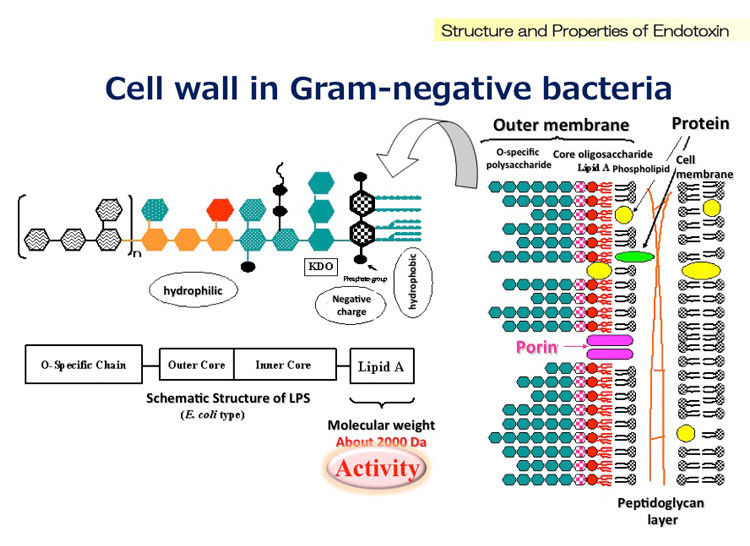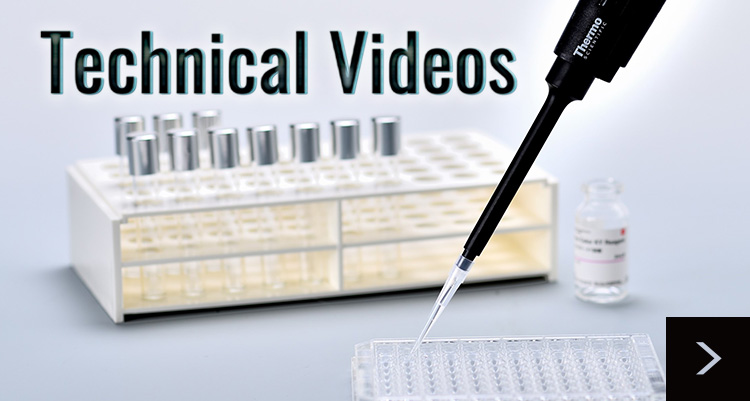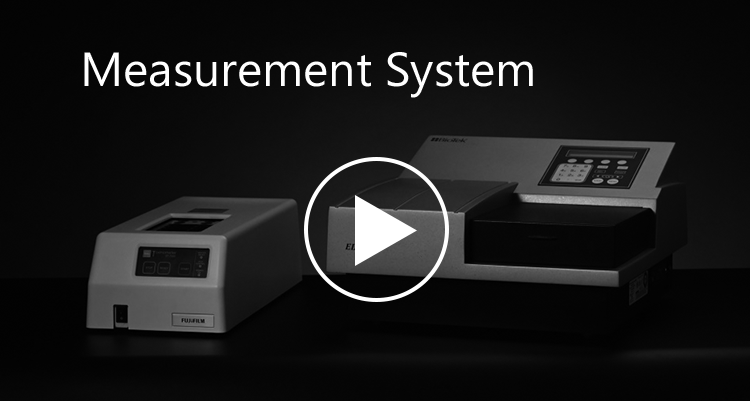What is Bacterial endotoxin
An endotoxin is a lipopolysaccharide (LPS) found in the cell wall of gram-negative bacteria. It is a typical pyrogen, which induces various biological reactions when even a small amount of pg (10-12 g) or ng (10-9 g) enters the bloodstream. Due to its heat resistance and stability, complete inactivation of endotoxin is not possible with autoclaving. Dry heat sterilization for at least 30 minutes at a temperature of 250 °C or more is required complete inactiocaiton,. It exists in the environment (e.g. water, air) inhabited by gram-negative bacteria, and bacterial endotoxins (LPS) remain even after the bacteria die.
Figure 1 shows the LPS structure schematic, which illustrates lipid A as the component responsible for the bioactivity. The molecular weight of this portion is approx. 2,000. The entire molecular weight, including the sugar chain moiety, is usually approx. 5,000 to 8,000. However, since an LPS consists of a hydrophilic region
(sugar chain) and hydrophobic region (lipid A), it associates in an aqueous solution to form a micellar structure with apparent molecular weight of hundreds of thousands to several millions. A change in the micellar structure reportedly influences the strength of bioactivity.
Figure 2 illustrates the structures of Salmonella-type and E. coli-type lipid A, which indicate that the basic structure of the lipid A is incommon, regardless of the strain variation.





